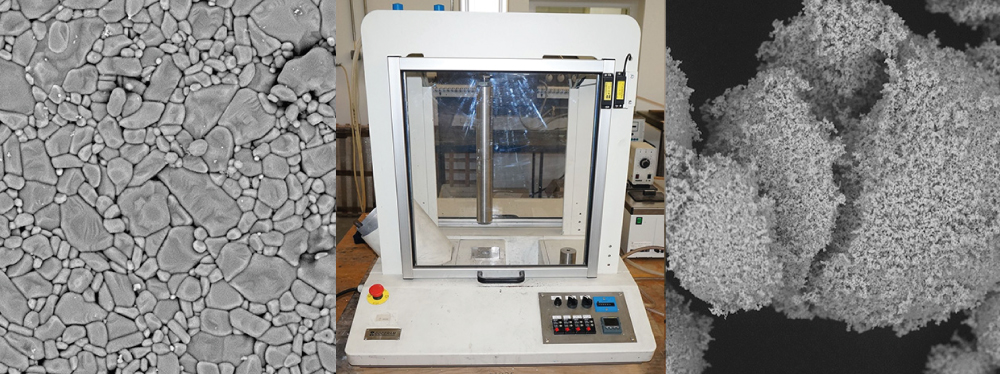WhatCIM
Ceramic nanocomposites produced by CIM for anti-wear and antistatic components
Challenge
The textile industry is constantly evolving and increasing its production rates in order to attend the demands of an increasingly competitive world-wide market. The fibers evolution and the increase of production speeds leads to a higher demand on wear components, especially in the yarn guides, which are present in various textile production machines. In addition of the wear problems, the yarn production faces another issue arising from the build up of static electricity in the components, which causes the accumulation of oligomers. These problems arising from the parts used currently in the industry have a major impact on productivity and processing costs, as they lead to a drastic decrease in machine performance as well as increased maintenance and production costs, for example due to cleaning and ambient filtering due to the release of oligomers.
Solution
The main objective of WhatCIM was to strengthen research, technological development and innovation.
The solution to this problem is the development of new yarn guides for the textile industry and their manufacturing process based on nanocomposite ceramic material and nanocomposite thin coatings. This innovation will be applied to case studies in order to solve the problems associated with wear and static electricity, and other friction related problems. To obtain the new technical ceramic, the whole process of ceramic injection molding (CIM) will be developed because of the components geometrical and functional specifications. The work plan contemplates the development of new ceramic matrix nanocomposite materials, the use of medium pressure injection molding (MPIM) as manufacturing process and the development of thin-film coatings by sputtering as a possibility to increase the surface properties of the components. Prototype parts will be produced according to the detected applications, following the developed production protocol, as well validation tests will be performed in an industrial environment.
Objectives, Activities and Results expected / achieved
The main goal of the WhatCIM project was to find a solution for the current problems of the textile industry, namely, the wear of the components that are in direct contact with the fibres at high speeds, as well as, the accumulation of oligomers due to static electricity. This last one being particularly concerning due to the creation of defects on the final product. In response to these problems were developed several ceramic formulations, including a conductive ceramic, as well as, several functional coatings. These coatings had to accomplish two conditions, namely, to reduce the wear, due to their low coefficient of friction and high wear resistance, and to guarantee that they are conductive in order to solve the static electricity problem. During the development of the project all the above solutions were subjected to several characterizations regarding their morphology and chemical composition as well as their mechanical proprieties. It is noteworthy that in this project it was necessary to bring the laboratory tests closer to the specific conditions applicable in the industry, so that the results were easily transposable and scalable for the industry. So, it was developed a wear testing equipment, capable of simulating the conditions that this parts face when in industrial operation, and that measures the coefficient of friction of the ceramic formulations, the different coatings developed and the combination of both. At the end of the project the objectives were fulfilled with the coatings and the ceramics having the desired proprieties and presenting better results than the parts currently in use.

Project Reference
CENTRO-01-0247-FEDER-034065Funding

Intervention Region
Center (100%) of PortugalTotal Investment
802.783,94IPN Investment
138 963,27Total Eligible
772.350,60IPN Eligible
138.963,27EC Funding – Total
553.300,44EC Funding – IPN
104.222,45Duration
36 MonthsStart Date
2018-07-01End Date
2021-06-30Approval Date
2018-05-10Consortium
Whatmat, Unipessoal ldaInstituto Pedro Nunes
Universidade de Aveiro
Centro Tecnologico da Ceramica e do Vidro
Borgstena Textile Portugal, Unipessoal Lda
Website
http://www.whatcim.comKeywords
Ceramics;CIM;
Thin-film coating;
Friction;
Wear;
Electrical conductivity.










